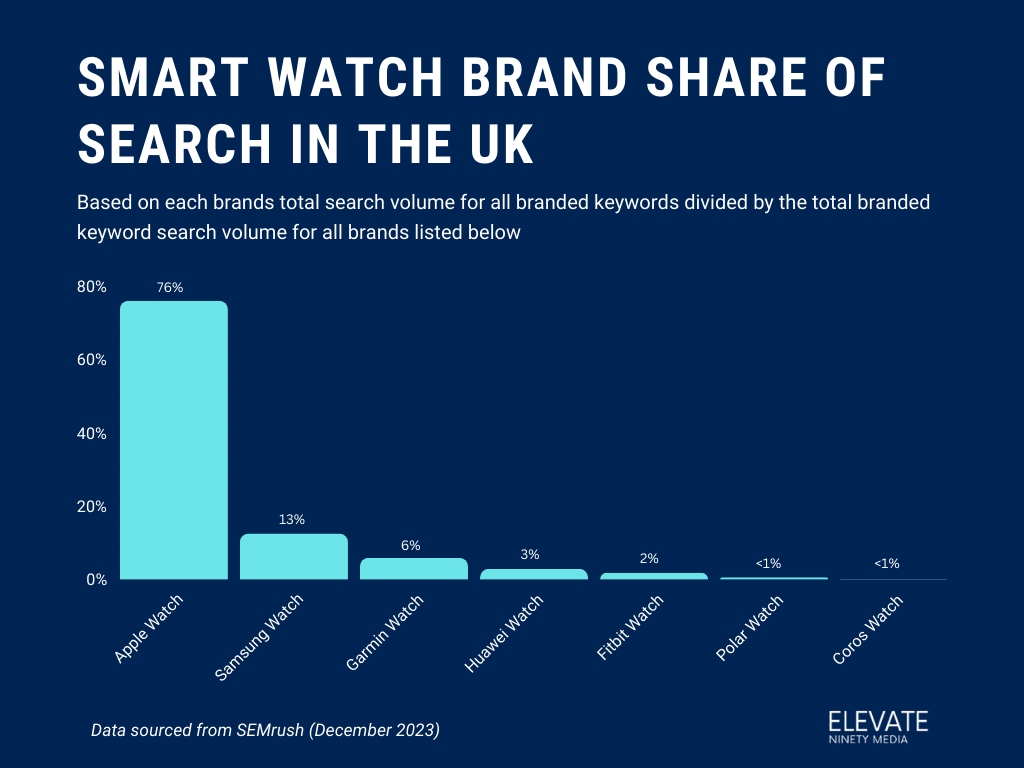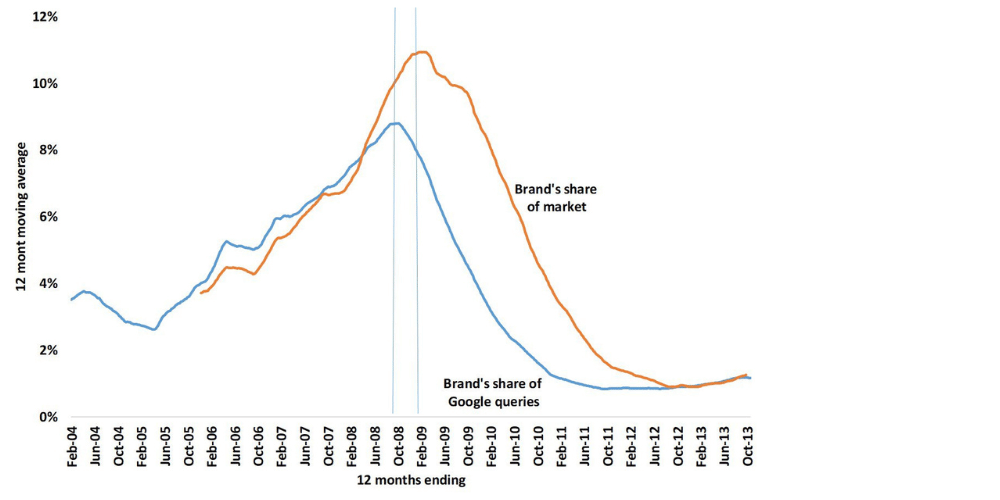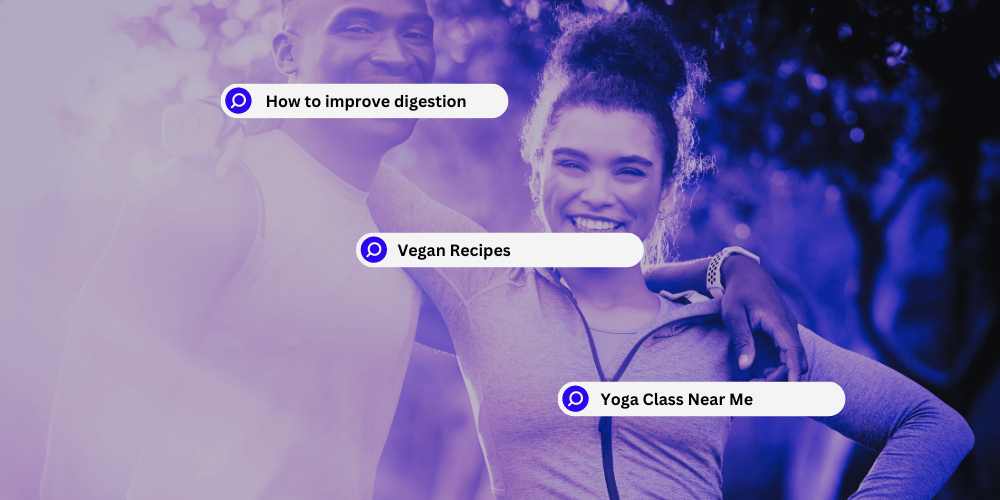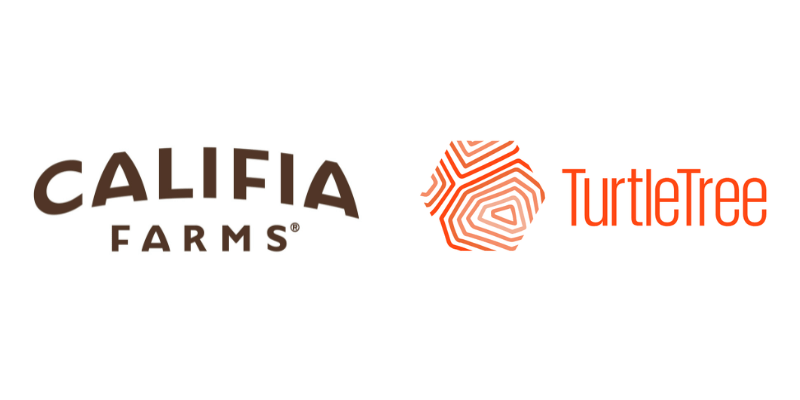The relationship between health and wellness related search data and consumer insight is both direct and profound. Search engines serve as a confidential confidante where individuals feel comfortable expressing their health concerns, making search data a treasure trove of unfiltered consumer insights. With over 1 billion health related questions happening on Google daily and 1 in 20 searches on google are related to health, the volume itself speaks volumes. This data, when analysed, can reveal patterns, trends, and consumer behaviour, offering an unbiased glimpse into the collective mind of the health-conscious public.
Why Consumer Insight Is Vital for Health and Wellness
For health and wellness brands, understanding consumer insights is not just beneficial — it’s essential. These insights help brands tailor their products and services to meet the specific needs and pain points of their consumers. By aligning offerings with consumer needs, brands can position themselves effectively in the market, gaining a competitive edge. Furthermore, consumer insights are crucial in crafting key messages and campaigns that resonate with the target audience, enhancing engagement and loyalty.
What Consumer Insights Can Be Discovered in Search?
By delving into search data, brands can uncover a wealth of consumer insights, each providing a piece of the puzzle to understanding market dynamics, consumer behaviours, and emerging trends.
Market or Product Demand
The volume of searches around specific health and wellness topics can signal market demand. For instance, a significant uptick in searches for “foods that improve gut health” or “yoga for beginners” might indicate a growing interest in these areas. Brands can capitalise on these insights by developing products or services that align with these interests. A health food company, noticing the rising trend in digestive health searches, might introduce a new line of snacks that supports gut health. Similarly, a fitness app could curate beginner yoga sessions to cater to the newfound interest.
Search interest can also help to identify seasonal demand. The health and wellness industry is heavily influenced by seasonal trends, from New Year resolutions to winter illnesses. The below image is a seasonal analysis from search trends for consumer diet preferences.

Consumer Behaviour
Trending searches and long-tail queries reveal much about consumer attitudes and behaviours. For example, an increase in queries like “how to relieve stress naturally” suggests a shift towards holistic wellness approaches. Brands can respond by highlighting natural ingredients in their products or emphasising holistic benefits in their marketing efforts. The specificity of long-tail queries, such as “best natural remedies for sleep,” provides even deeper insights, indicating a preference for natural over pharmaceutical solutions to common health issues.
Health and Wellness Concerns
The term “Dr. Google” underscores the trend of people turning to search engines for health advice. This behaviour can be an early indicator of rising health concerns. For instance, a spike in searches for “symptoms of vitamin D deficiency” during winter months might highlight a widespread concern about vitamin D levels. Brands selling vitamin D supplements can use this insight to time their marketing campaigns, ensuring they reach consumers when the need is most felt.
Search Intent
Understanding the intent behind searches is crucial. Searches can be informational (“What are the benefits of meditation?”), navigational (“nearest gym to me”), commercial (“cost of cold water tub”) or transactional (“buy organic protein powder online”). A brand selling meditation apps, noticing a high volume of informational searches, might focus on creating educational content that highlights meditation benefits. This approach not only addresses the consumers’ informational needs but also guides them gently towards considering their app. Conversely, a health foods store notices high transactional volume of searches for ‘protein powders’ can increase their advertising and SEO efforts for their protein powders.
By meticulously analysing search data, brands in the health and wellness sector can uncover the nuanced needs and preferences of their target audience. This knowledge enables them to tailor their offerings, ensuring they meet consumers right where they are, with the right solutions. With each search query acting as a beacon, brands that navigate these insights with agility and responsiveness are the ones that will thrive in the ever-evolving landscape of health and wellness.
How Search Can be Used as a Measure of Brand Performance
In the digital age, brand performance is increasingly gauged through the lens of online visibility and engagement. Search data, with its vast repository of consumer queries, stands as a pivotal metric for assessing how a brand stacks up in the health and wellness sector. This data, when harnessed effectively, can reveal insights into market share, brand health, and competitive positioning.
Market Share
The concept of “share of search” has emerged as a compelling indicator of market share. Essentially, it measures the volume of search queries related to a brand as a proportion of total searches in its category. For instance, if “Brand X protein powder” commands a significant share of all protein powder-related searches, it suggests a strong market presence. This data point can be a litmus test for brand visibility and consumer interest. The below chart shows an example of share of search for the Fitness Smartwatch market in the UK.

Early Warning Indicator
Moreover, fluctuations in share of search can serve as an early warning system for brands. A sudden dip may signal a loss of consumer interest or the emergence of a formidable competitor. Conversely, an uptick suggests growing brand strength. For example, if a wellness app notices a gradual increase in its share of search relative to competitors, it could indicate effective marketing or a successful new feature launch.

Competitive Monitoring
Keeping an eye on the share of search also allows brands to monitor their competitors closely. If a competitor’s share of search spikes, it could warrant a deeper analysis to understand their strategies. This insight is invaluable for brands to stay agile and adapt to market dynamics.
Brand Health
Beyond market share, search data can illuminate aspects of brand health. A high volume of positive search queries like “benefits of using Brand Y” versus negative ones like “Brand Y side effects” can indicate strong brand sentiment. Brands can leverage this information to reinforce their strengths and address any emerging concerns.
By leveraging search data as a measure of brand performance, health and wellness brands can gain a nuanced understanding of their market position. This insight not only aids in strategic planning but also ensures that brands remain responsive to consumer needs and market dynamics. With the digital landscape evolving rapidly, the ability to interpret and act on search data can be a significant determinant of a brand’s success in the health and wellness industry.
Other Benefits of Search Data for Health and Wellness Brands
Search data transcends basic market analysis, offering health and wellness brands a myriad of additional benefits that can fine-tune strategies and propel growth. By digging deeper into this data, brands can unlock geographical insights, understand related topics, and appreciate the unbiased nature of search queries.
Geographical Insights
Search data can be dissected by region, providing brands with localised insights that are gold for tailoring marketing strategies. For example, a surge in searches for “vegan recipes” in a specific city could lead a supplement brand to target that area with specific advertising campaigns and product launches. This level of granularity ensures that marketing efforts are not just broad strokes but finely tuned to resonate with regional preferences and trends.
Using tools like google trends can help to home in on specific geographies, as demonstrated below. A company that sells blood pressure monitors will be interest to know which states has the highest search interest in the topic ‘Blood Pressure.

Related Topics
The interconnectedness of search topics offers brands a window into consumer lifestyles and complementary interests. For instance, a high correlation between searches for “yoga studios” and “mindfulness” might prompt a yoga studio to offer yoga for mindfulness classes. Also, it may prompt a company that has developed a mindfulness app to collaborate with Yoga Studios and Instructors. This synergy between related search topics can lead to innovative marketing strategies and partnerships that amplify brand reach and relevance.
Unbiased and Truthful Insights
One of the most compelling advantages of search data is its authenticity. Unlike surveys or social listening, where responses can be biased or influenced by societal expectations, search queries are raw and honest. People tend to search for what they genuinely need or are curious about, without the filter of social desirability. This means that when someone searches for “symptoms of anxiety,” it reflects a real concern, offering mental health brands an opportunity to address this need directly through informative content or service offerings.
By leveraging these additional benefits of search data, health and wellness brands can gain a more holistic view of their audience. This not only enhances product and service development but also refines marketing strategies to be more impactful and aligned with consumer needs. In a world where personalisation and relevance are key, the insights derived from search data are invaluable assets for any health and wellness brand looking to make a meaningful connection with its audience.
How Health and Wellness Brands Can Leverage Search Insights for Success
Leveraging search data effectively means turning insights into action. Health and wellness brands can use these insights to inform product development, marketing strategies, and content creation, ensuring they meet the evolving needs of their consumers. Furthermore, with solutions like Elevate Trends, brands can offload the complex task of analysing search trends, receiving tailored, actionable insights that keep them informed and ahead of the curve.
In conclusion, the wealth of consumer insights hidden within search data is undeniable. For health and wellness brands, tapping into this resource is not just an opportunity but a necessity for success in a competitive market. By understanding and responding to the insights revealed by search data, brands can ensure they remain relevant, responsive, and resonant with their target audiences.





